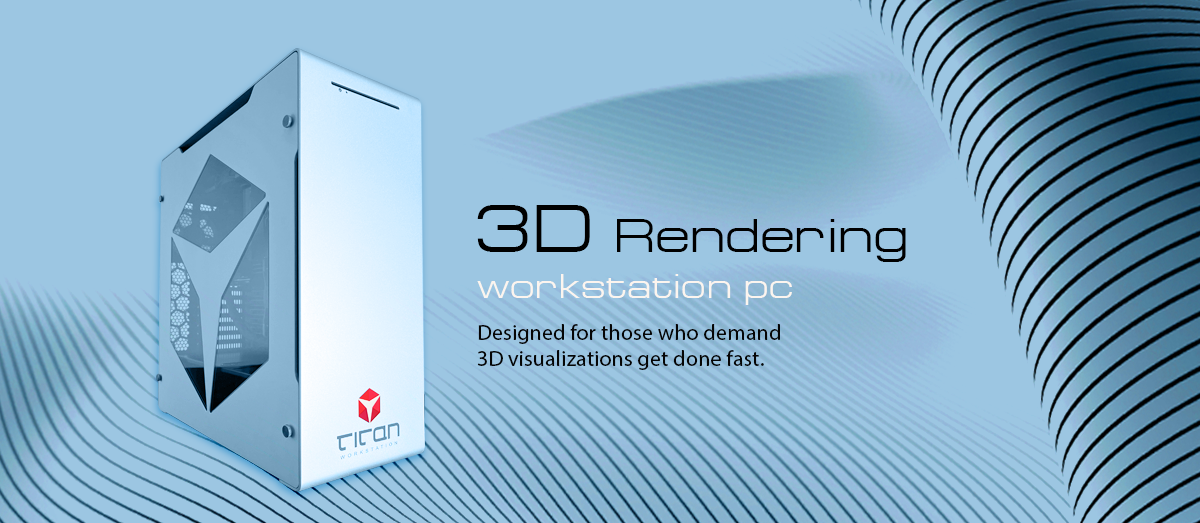The Heartbeat of Your Projects: CPU Performance
With rendering times that can stretch into coffee breaks,
or even overnight waits, a robust multi-core CPU isn't just nice to have; it's
your ticket to more time creating and less time waiting. It’s not the component
that gets the most flashy attention, but it’s the brains of the entire
operation.
With 3DS Max you don’t have to go crazy when it comes to core count. We’d
suggest a mainstream core count of six to eight cores, but with per-core
performance as fast as possible. 3DS Max loves single-threaded performance!
However, the Arnold renderer used by 3DS Max can take advantage of either CPU
or GPU cores. If your GPU choice is going to be more modest, then a CPU with
many cores may be a good idea. However, this is only true of the workstation in
question will be used for both design and rendering. Usually a dedicated
computer is used for rendering, to prevent a break in design workflow.
Visual Magic at Your Fingertips: GPU Rendering
If the CPU is the heart, then the GPU is the soul of your
3DS Max visuals, bringing your creations to life with stunning clarity and
color. When it comes to GPU-based rendering, seeing your work evolve in
real-time is like watching magic unfold—every adjustment, every light, and
every texture comes alive instantly.
With Titan's selection of top-tier NVIDIA graphics cards, your workstation
becomes a canvas for real-time creativity, transforming lengthy rendering
chores into moments of near-instant artistic gratification.
The Titan Workstations we recommend for 3DS Max use GPUs that have been tested
and added to the official list of 3DS Max compatible GPUs. However, keep in
mind that only professional-grade GPUs (e.g. NVIDIA Quadro or AMD FirePro) are
“certified” for 3DS Max and we do recommend sticking with those cards when
selecting a workstation for this software.
The Backbone of Your Creativity: Memory
Juggling multiple 3DS Max projects is no small feat—like a
conductor leading an orchestra, every element must come together in harmony.
Sufficient, speedy RAM ensures your workstation can handle multiple tasks
seamlessly, from complex simulations to real-time edits, all without missing a
beat.
Apart from being fast, you also need enough RAM to run 3DS Max smoothly, but
the good news is that Max isn’t particularly RAM-hungry, and most typical
projects will run well using 32GB of RAM. However, it may be a good idea to
invest in a 64GB system today, since memory requirements inevitably creep
upwards.

Your Creative Vault: Storage Solutions
Fast SSDs ensure your precious works are always within
quick reach, reducing load times to mere moments. Meanwhile, expansive HDDs
offer vast room to archive your myriad creations, ensuring that no idea is ever
left behind. With Titan's customizable storage options, your workstation
becomes a secure, speedy vault for every spark of your creativity.
We recommend at least a 500GB NVME SSD as the primary OS drive and 3DS Max
drive. A secondary SSD storing your active projects, and a large mechanical
hard drive to archive inactive projects.
Your creative journey is unique, and so should be your tools. At Titan
Computers USA, we celebrate this individuality by offering workstations you can
tailor to fit the contours of your 3DS Max projects. Choose your components,
configure your specs, and let us build you a workstation that's as unique as
your creative vision.
Join the Titan Family
Embark on your 3DS Max adventure with a Titan workstation
by your side. Feel the difference that the right companion can make to your
creative journey. Ready to elevate your 3D artistry? Reach out today, and let's
start building the workstation of your dreams.
LIST OF COMPATIBLE WORKSTATIONS: